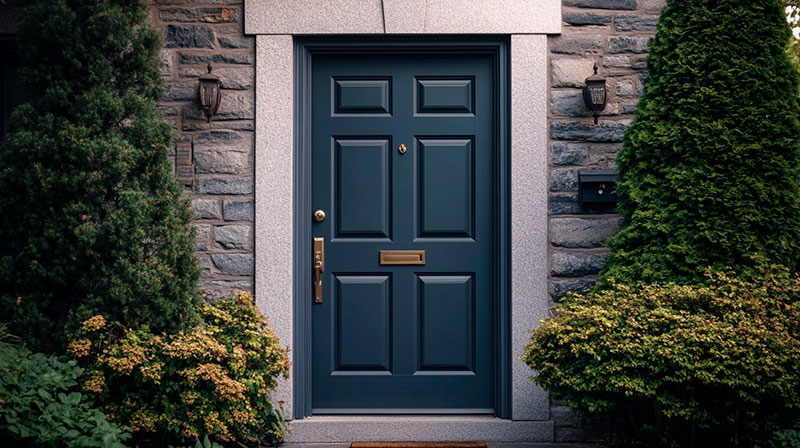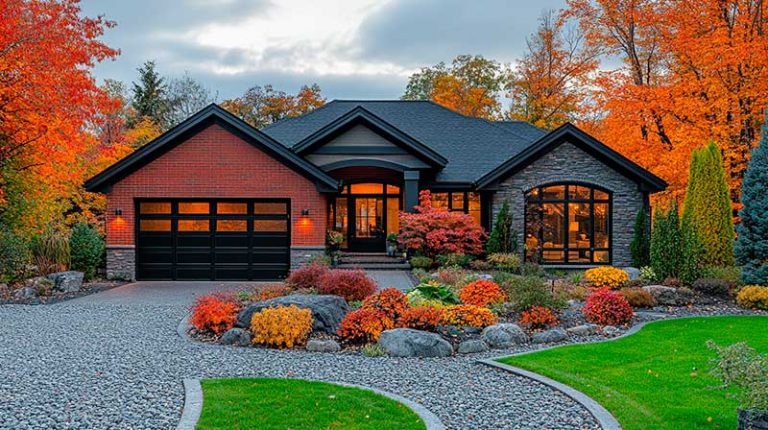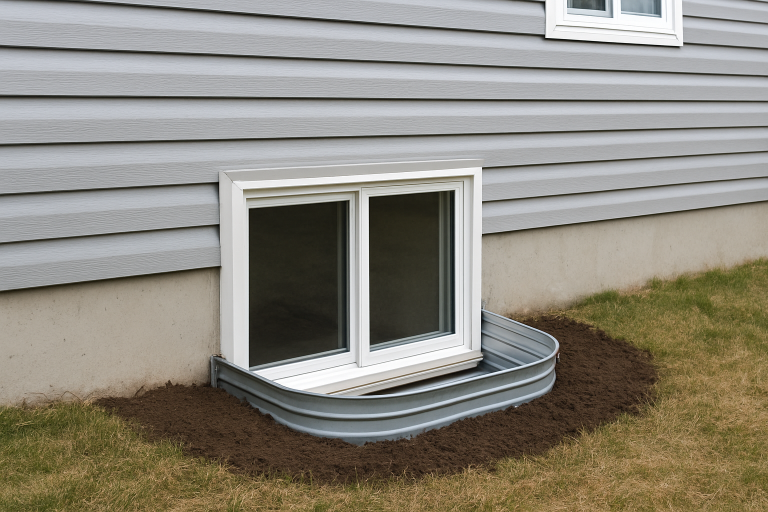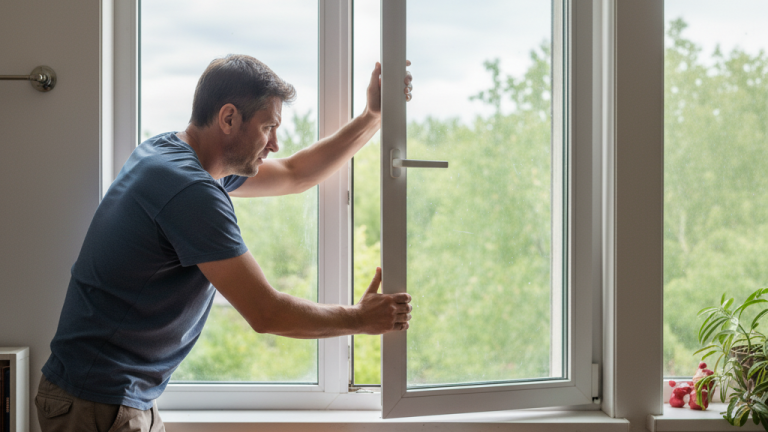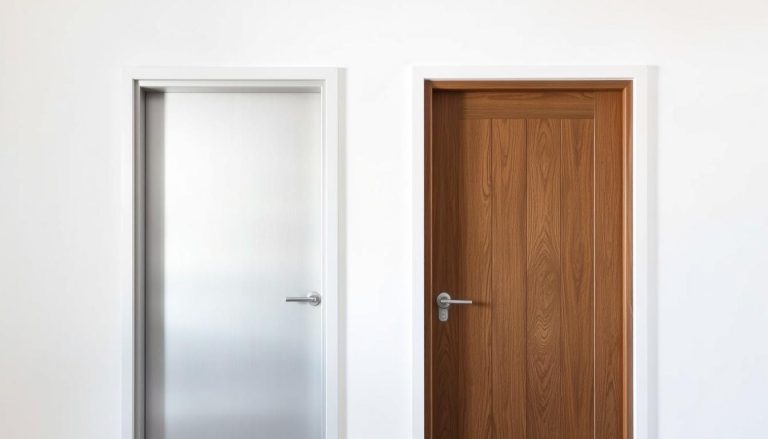As a Canadian homeowner, understanding parts of a door is crucial for maintenance, security, and energy efficiency. At Total Home Windows and Doors, we believe that knowledge empowers better decisions. In this comprehensive guide, I’ll walk you through every component of a door, from the frame to the smallest hardware elements.
Window Replacement Near Me
Door Frame and Surroundings
The foundation of any door system starts with its frame and surrounding components. Let’s break down these essential elements:
Door Frame
The door frame is the outer structure that supports and secures your door. Without a properly installed frame, even the highest quality door won’t function correctly.
"The door frame is like the foundation of a house—if it's not square and level, everything else will be off. We see this frequently during inspections where doors aren't closing properly," says Eugene Siukayev, Project Manager at Total Home Windows and Doors.
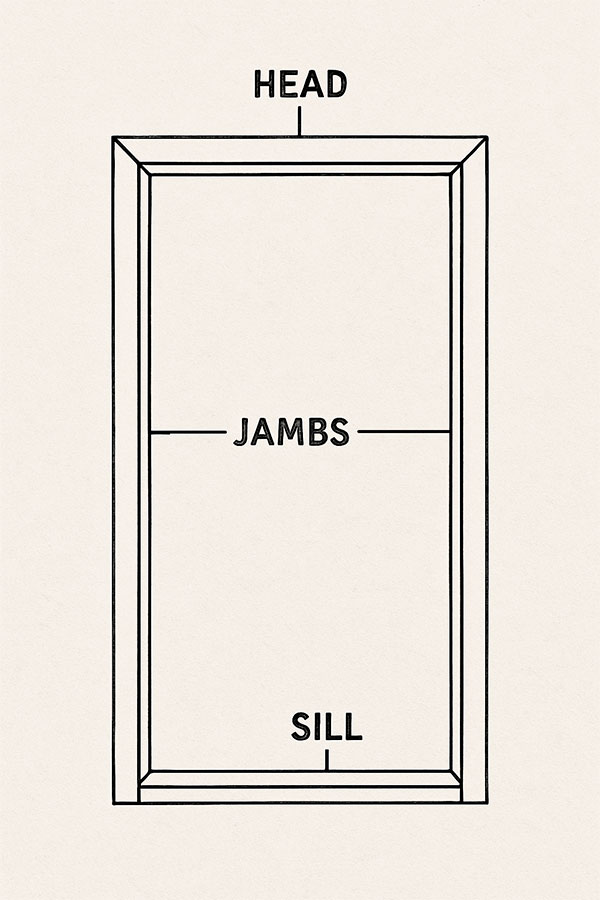
The frame consists of several key components:
- Head: The horizontal piece at the very top
- Jambs: The vertical sections on either side
- Sill: The component at the very bottom
A quality frame provides structural integrity and helps prevent air leakage and forced entry.
Door Jamb
The door jamb is one of the most critical vertical components of the door frame. Located on each side of the door opening, jambs serve multiple purposes:
- They hold the hinges that allow the door to swing open
- They provide a surface for the door latch to secure into
- They help maintain proper door alignment
Damaged jambs can compromise security and affect your door’s operation. At Total Home Windows and Doors, we use premium materials for our jambs to ensure longevity.
Door Head
Sitting at the very top of the door frame, the door head (sometimes called the door header) is the horizontal piece that connects the two vertical jambs. This integral part:
- Maintains proper alignment of the entire frame
- Supports the weight above the door opening
- May contain additional features in some door designs, such as transom windows
The door head must be structurally sound to prevent sagging and ensure your door operates smoothly for years.
Threshold
At the floor level, the threshold marks the transition point between rooms or between interior and exterior spaces. This horizontal piece serves multiple functions:
- Creates a seamless transition between different flooring surfaces
- Provides a surface where the door rests when closed
- Often incorporates weather stripping to prevent drafts
For exterior doors, thresholds are particularly important for keeping out the harsh Canadian elements.
Door Panel and Components
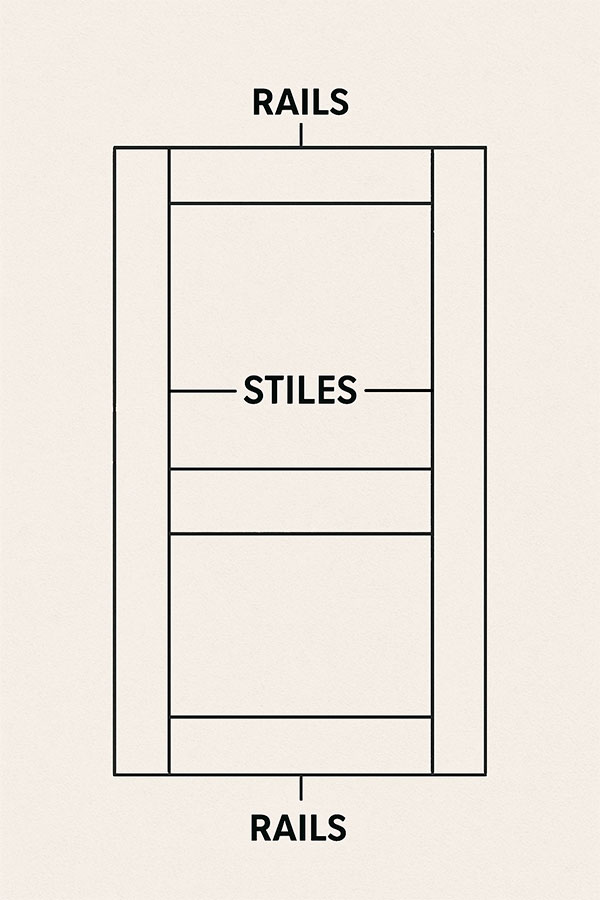
Door Panel
The door panel is the main body of the door – what most people think of when they picture a door. It’s composed of:
- Stiles: The vertical sections on each side
- Rails: The horizontal sections at the top, bottom, and sometimes middle
- The center area, which may be solid or contain glass inserts
Door panels come in countless designs, from solid wood to those with decorative glass that allow natural light to flow through.
"When selecting a door panel, consider both aesthetics and functionality. A door with glass inserts might be beautiful for your front entrance, but a solid panel might be more appropriate for areas requiring privacy or better insulation," advises Cherry Jian, Sales Consultant at Total Home Windows and Doors.
Parts of a Door: Technical Breakdown
Let’s look at the technical terms for different door components:
| Component | Function | Location |
| Stile | Provides vertical framework | Outside edge of the door panel |
| Top Rail | Provides horizontal framework | Very top of the door panel |
| Bottom Rail | Provides horizontal framework | Very bottom of the door panel |
| Lock Stile | Contains the locking mechanism | Side of the door where the handle is located |
| Hinge Stile | Holds the hinges | Opposite side from the lock stile |
| Mullion | Divides sections of the door | Center of the door between divided lites |
Understanding these elements helps when discussing repairs or replacements with professionals.
Door Hardware and Accessories
Door Handle
The functionality of your door depends heavily on its hardware components:
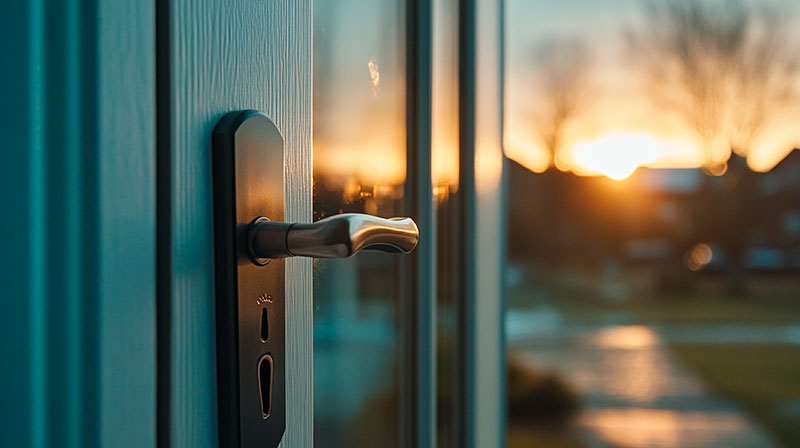
The door handle is what you grasp to operate the door. Modern handles come in various styles:
- Lever handles (easier for those with mobility challenges)
- Knobs (traditional design)
- Pull handles (common on sliding doors)
When you turn or press the handle, the latch retracts, allowing the door to open.
"Don't underestimate the importance of quality door hardware. It's not just about aesthetics—it's about security, durability, and functionality. We've seen many cases where homeowners invest in beautiful doors but compromise on hardware, only to regret it later," says Daniel Klein, Project Manager at Total Home Windows and Doors.
Key Cylinder
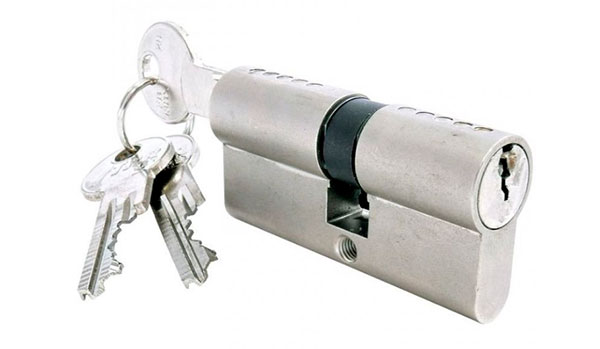
The key cylinder is where you insert your key to lock or unlock the door. This security component:
- Contains pins that align when the correct key is inserted
- Connects to the locking mechanism inside the door
- Is available in various security grades
For entry doors, we recommend high-security cylinders that resist picking and bumping.
Mortise Plate
The mortise plate is a metal plate installed in the door frame that receives the latch or bolt. This component:
- Reinforces the door frame where the latch engages
- Helps prevent wear on the wooden jamb
- Is crucial for proper door security
A quality mortise plate should be at least 1/8″ thick and securely fastened with long screws that reach the wall framing.
Strike Plate
Similar to the mortise plate, the strike plate is the metal component on the jamb that receives the latch when the door is closed. The difference is:
- Strike plates are visible when the door is open
- They often have a curved lip to guide the latch
- They can be part of an electric system for automated doors
Additional Components and Features
Door Sweep
A door sweep is a strip of flexible material attached to the bottom of the door. This component:
- Seals the gap between the door and threshold
- Prevents drafts, dust, and insects from entering
- Reduces energy costs by improving insulation
Door sweeps are particularly important for Canadian homes dealing with cold winters and need to be replaced periodically as they wear down.
Weatherstripping
Weatherstripping is material that lines the edges of the door to create a seal between the door and frame. Benefits include:
- Preventing air leakage around the door perimeter
- Reducing noise transmission
- Enhancing energy efficiency
At Total Home Windows and Doors, our doors feature premium weatherstripping that stands up to Canada’s extreme temperature fluctuations.
Glazing
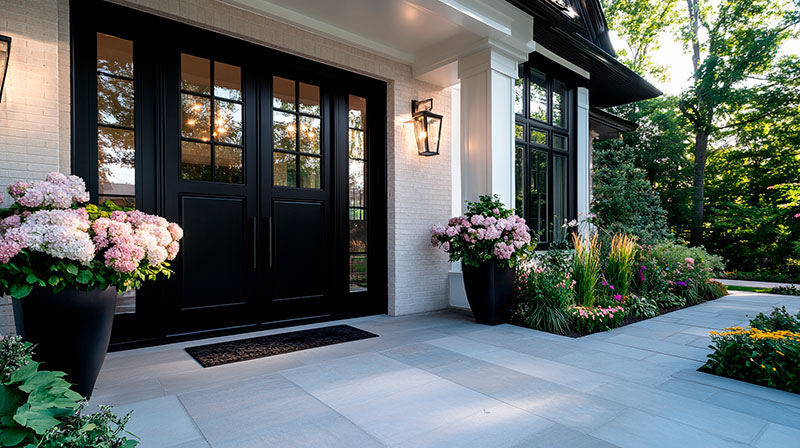
Glazing refers to the glass elements in a door. These can range from small decorative inserts to full-length glass panels:
- Single glazing: One layer of glass (less insulation)
- Double glazing: Two units of glass with an air space (better insulation)
- Triple glazing: Three units of glass with two air spaces (best insulation)
For Canadian homes, we recommend at least double glazing for energy efficiency.
Exterior Doors Types
Exterior doors must withstand both security threats and weather challenges. The most common types include:
Entry Doors:
- Provide the main access to your home
- Available in wood, fiberglass, and steel
- Often feature decorative elements
Storm Doors:
- Add an extra layer of protection
- Allow ventilation while maintaining security
- Typically include glass and screen options
Double Doors:
- Create a grand entrance
- Consist of two panels that meet in the middle
- May include an active and inactive door
| Door Type | Average Price Range | Advantages | Considerations |
| Steel doors | $1,500 - $5,000 | Durability, security, low maintenance | Can dent, may conduct cold |
| Fiberglass doors | $2,500 - $10,000 | Insulation, weather resistance, versatile finishes | Higher initial cost |
| Storm doors | $900 - $2,000 | Added protection, ventilation options | Requires maintenance of two doors |
| Vinyl patio doors | $1,500 - $5,000 | Energy efficient, affordable | Limited style options |
| Garden doors | $3,500 - $5,000 | Elegant appearance, good ventilation | Higher maintenance requirements |
Door Replacement
When considering door replacement, keep these factors in mind:
Pros of Door Replacement:
Cons of Door Replacement:
At Total Home Windows and Doors, we offer a lifetime warranty on our door installations, giving you peace of mind that your new door will perform for years to come.
Frequently Asked Questions
What are door hinges and how often should they be maintained?
Door hinges are hardware components that connect the door to the jamb and allow it to swing open. They should be lubricated annually with silicone spray or light oil to prevent squeaking and ensure smooth operation, especially in Canadian climates where temperature fluctuations can affect performance.
What is a door sill and why is it important?
The door sill is the horizontal component at the bottom of the door frame that creates a transition between flooring surfaces. It plays a crucial role in preventing water infiltration and drafts, especially in exterior applications. A properly installed sill enhances energy efficiency and protects your home from the elements.
How do vertical windows complement doors in entryways?
Vertical windows alongside entry doors increase natural light while maintaining privacy. These architectural elements enhance your home’s appearance and create a welcoming entrance. When properly sealed, they work with your door system to maintain energy efficiency without compromising on style.
What are rail rails and how do they affect door strength?
Rail rails refer to the horizontal components (top rail, bottom rail, and sometimes middle rails) that form the structural framework of a door panel. They connect with stiles to create the door’s framework. The size and material of rails directly impact the door’s stability, durability, and resistance to warping.
How does a latch mechanism work in modern doors?
A latch mechanism connects the door handle to the strike plate, securing the door when closed. When you turn the handle, the latch retracts, allowing the door to open. Modern mechanisms feature smoother operation and enhanced security features compared to older designs.
What's the difference between stile stiles and rails in door construction?
Stile stiles are the vertical members on the sides of the door panel, while rails are the horizontal pieces. Together they form the frame that holds panels or glass. The lock stile contains the locking hardware, while the hinge stile supports the hinges that allow the door to swing.
What other elements should I consider when choosing a new door?
Other elements to consider include energy efficiency ratings, security features, material durability, and compatibility with your existing architecture. Don’t overlook details like weatherstripping, door sweeps, and proper installation—these elements significantly impact performance and longevity in Canadian homes.
Conclusion
Understanding door anatomy isn’t just about knowing technical terms—it’s about making informed decisions for your home. Whether you’re troubleshooting an issue, planning a replacement, or simply wanting to understand your home better, this knowledge empowers you.
With over 14 years of experience and more than 28,000 satisfied customers across Central and South Ontario, our team at Total Home Windows and Doors is committed to providing exceptional products and service. Our engineering background shapes every aspect of our business, from innovative designs to optimized processes.
Have questions about your doors or windows? Contact our dedicated service team—we’re here to help you create a more comfortable, secure, and beautiful home.

